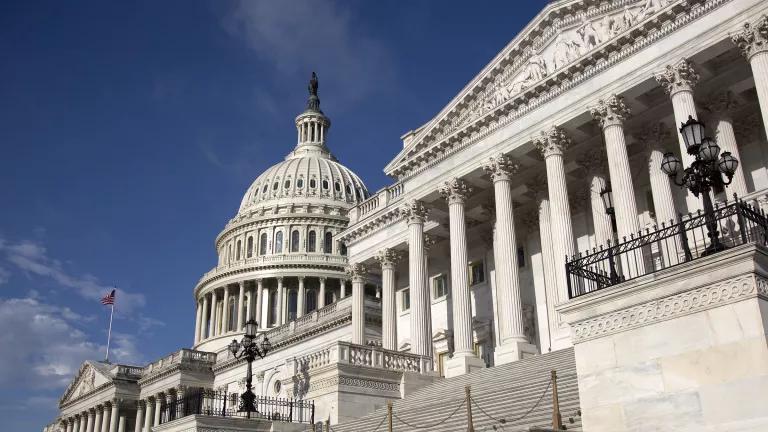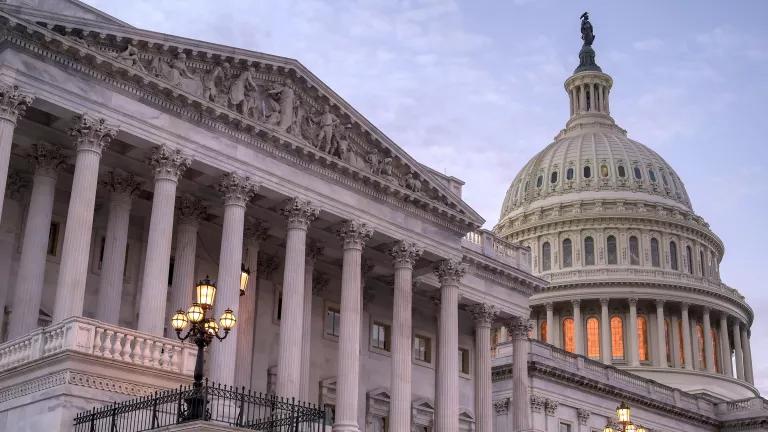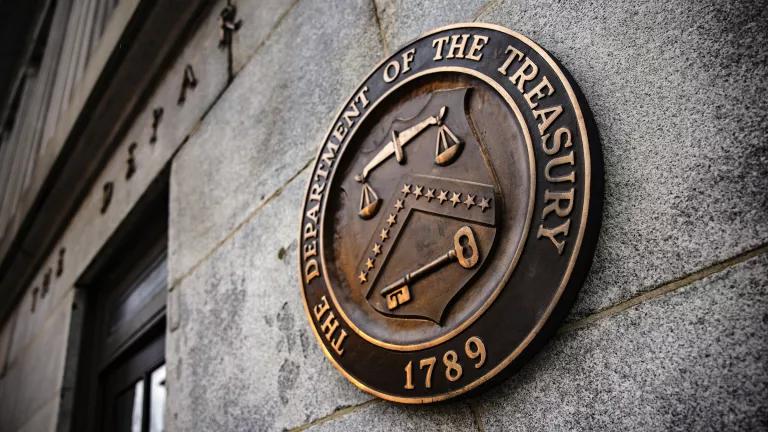Setting the EPA Back on Track
After 50 years, what does the future of the U.S. Environmental Protection Agency hold?

After 50 years, what does the future of the U.S. Environmental Protection Agency hold?
By a margin of more than 7 million votes, Americans elected Joe Biden president, largely on his promise to help unite the country and restore the public’s faith in our democracy.
It’s a tall order, but he can make a good start on both by setting the U.S. Environmental Protection Agency (EPA) back on track. Few arms of the government touch all of us more directly or have suffered more harm under Donald Trump.
It was 50 years ago, on December 2, 1970, when Richard Nixon, a Republican president, established the EPA to protect the public from runaway pollution that damaged our health and put our communities at risk.
Since then, the agency has become the worldwide gold standard for environmental protection, dramatically reducing the air pollution, water contamination, and toxic chemicals that make us sick, even as our economy has nearly quadrupled.
The public benefits have been huge. Reductions in air pollution alone saved Americans up to $3.8 trillion just this year, preventing up to 370,000 premature deaths and more than 30 million lost days of work or school. Those benefits accrue to all of us, Republicans and Democrats alike.
The Trump administration, though, has turned the EPA mission on its ear—protecting polluters, not people.
The administration has tied the agency’s hands, crippled or eliminated commonsense safeguards, curbed enforcement of environmental laws, and turned its back on climate change, the central environmental crisis of our time.
Biden has made it clear that polluters have had their day—every day that Team Trump has been in office. Their time’s up. Biden’s EPA will get back to protecting people and restoring the agency to the mission it was founded on 50 years ago.
That begins with naming what I like to call an “Anthony Fauci of the environment” to head the EPA; someone who, whether they’re a scientist or not, has unassailable credibility among scientists, advocates, and the public.
Much as the Trump administration has put our health at heightened and needless risk by ignoring the science behind the coronavirus pandemic and dismissing experts like Dr. Fauci, it has also recklessly disregarded the truth about environmental hazard and harm.
The next EPA administrator must make it clear from the start that sound science, public health, and the rule of law will guide agency actions and decisions. We need an environmental champion who makes equity a core agency value, listens and learns from public comments and concerns, and puts protecting our people’s health, communities, and future first.
That means taking action on climate change now since the last administration squandered four years we couldn’t afford to lose.
The Biden administration is going to hit the ground running. Biden has named former secretary of state John Kerry to oversee international climate policy; former deputy secretary of state Antony Blinken as Secretary of State; and senior foreign service officer Linda Thomas-Greenfield as U.S. ambassador to the United Nations.
This marks a clear return to U.S. climate leadership, at home and abroad. It puts effective climate action at the top of the agenda. And it sends the message to our friends and allies around the world that they can once again take us at our word and depend on our partnership in the vital effort to confront a global crisis that demands global solutions.
That’s 180 degrees from where we’ve spent the past four years.
The Trump administration rolled back vital standards and rules the EPA had put in place to clean up the cars, trucks, and dirty power plants that generate nearly two-thirds of the U.S. carbon pollution that’s driving climate change. We need a new generation of even more ambitious standards now to cut our carbon footprint in half by 2030, as the science tells us we must.
That’s how EPA actions can support the $2 trillion Biden has pledged to invest in energy efficiency, electric vehicles, wind and solar power, modern electricity distribution and storage, and other clean energy infrastructure. Congress should work with Biden from day one to make a substantial down payment on this investment as part of a broader economic recovery package.
When the pandemic hit, there were 3.4 million Americans working in the clean energy sector, making 25 percent more, on average, than the national median wage. Clean energy investment can help to ensure the strong, durable recovery we need, creating millions more good jobs in every community in the country.
Biden has pledged to structure public investment in clean energy in a way that protects low-income communities, people of color, tribal nations, and other vulnerable groups from climate impacts that fall disproportionately on those least able to cope with them. Under his plan, these groups will also receive the benefits of clean energy—better health, improved quality of life, and good jobs—by receiving at least 40 percent of clean energy investment.
Hand in glove with clean energy is the need to conserve more of our public lands and oceans, and to reinstate clean water protections the Trump administration dismantled. By strengthening wetlands, forests, and croplands, we can enhance their natural capacity to absorb carbon from the atmosphere and lock it away in healthy soils.
Fifty years after the EPA was born, we are positioned to restore the agency to being the gold standard for public health and environmental protection, as it was created to be. We have elected a new president with the strongest plan we’ve ever seen to fight the climate crisis in a way that helps to build a healthier, more prosperous, more equitable future for everyone.
This plan shouldn’t divide us into red state or blue. It should unite us, as American people, confident in the road ahead and sure of our ability to travel it together.



